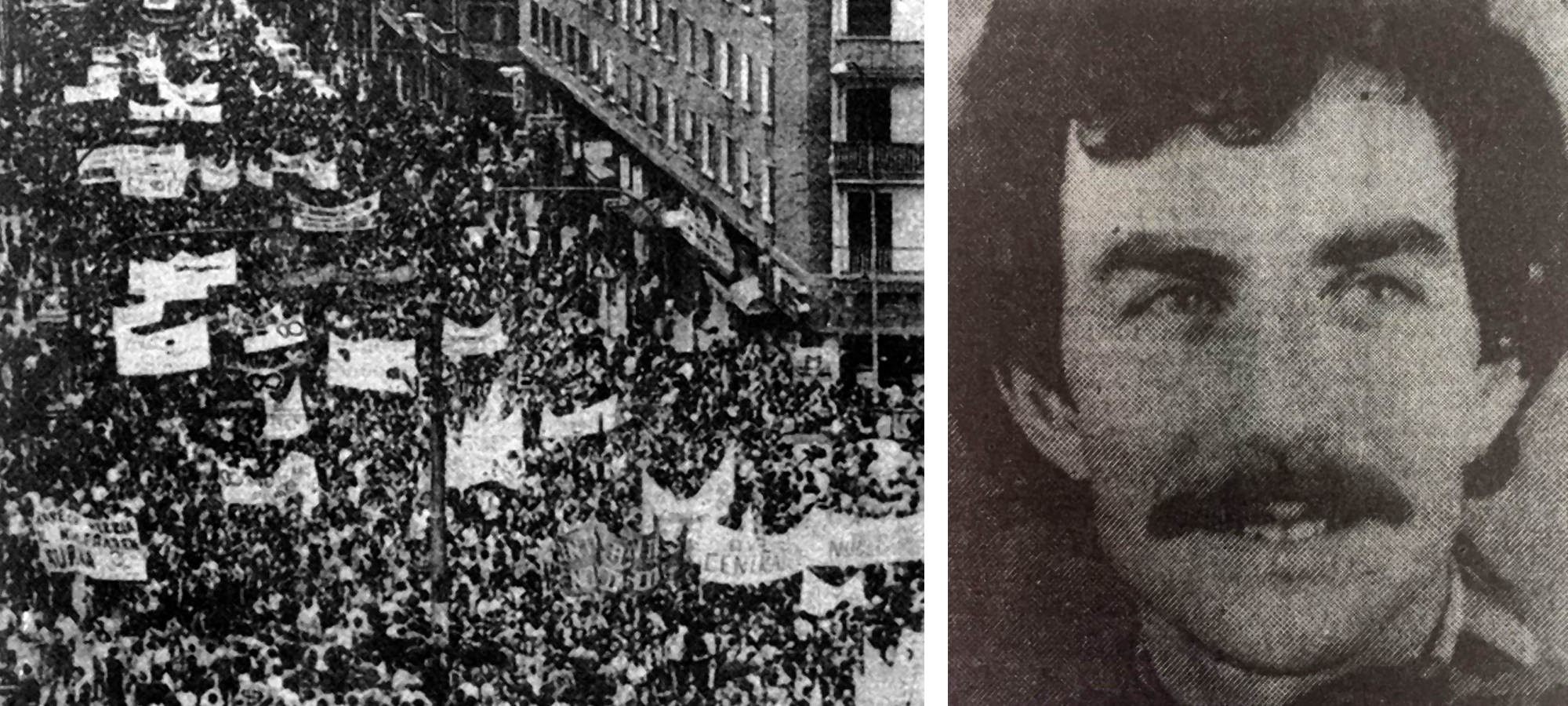Memory and transmission exercise
- No, thanks! Documentary The Gladys window in Donostia. The documentary focuses on the fight against nuclear power in the 1970s and 1980s. The life of Gladys del Estal, a 23-year-old Donostia who was shot to death by the San Sebastian Police. In June it is 40 years since his death and since the premiere many very excited people have emerged.

“To fight everything, we learned to fight for something.” They are words of Mabel Cañada, in the initial part of the documentary. In the early stages, non-do fragments appear on the screen: Franco inaugurating the Garoña nuclear power plant, explaining how important the Franco Lemoiz power plant will be... The times of nuclear power. In Hiroshima, 200,000 people died in the years after the United States atomic explosion, many of the rulers who said it was the most useful energy resource possible. The Spanish Government and Iberduero thus proposed five projects of nuclear power plants in the Basque Country and in the suburbs: In Garoña, Lemoiz, Tudela, Ea-Ispaster and Deba. If everyone were to get started, as indicated in the film, the Basque coast would have had the highest concentration of radiation worldwide.
Because of the value of life, because of the environment, a transversal movement against nuclear energy was initiated both in the Basque Country and internationally. This wave, which lasted for years, had made a whole village move. Always peaceful by its nature and carried by the smile of the sun.
After several prereleases, the first stop was done at Gladys’ house in San Sebastian, at the Main Theatre. The expectation was evident and the space has been filled up. The director Bertha Gaztelumendi and the writer of the documentary Sabino Ormazabal, and the soul matter, have been greeted with applause when they have gone up on stage and offered a recital of thanks to all the team that has worked behind the film. Nor has it been necessary to mention Gladys, as there are many people who lived close to that time.
The film covers the events before and after the death of the young man, and illustrates the social movement that attracted much of the Basque society of the time. The work has documented endless interviews and images that explain the details of each of the plants and the movement itself. “The monster stayed at the end,” says an interviewee outside the Lemoiz power station. Once the Deba and Ea-Ispaster power station was suspended, it was ready to launch the power station already built on the Biscayan coast. As can be seen in the documentary, Euskal Herria was in a state of flames.

The environmental movement was strong. Activists remember that several paralyzed power plants, "Even though we've built Lemoiz, we can't let it turn on." They gave it everything so they wouldn't turn it on. Thus, ETA also joined the activity. There were deaths around the Lemoiz power plant, and the atmosphere became even more violent. The unjust police interventions were even harder, and as Gladys' interviewed friend says, the members of the anti-nuclear movement were clear that they should not use violence. So, however, what might have happened once happened in Tudela. In 1979, following the nuclear accident near Harrisburg EE.UU. and coinciding with World Environment Day, on 3 June, a crowd gathered in Tudela claiming the dismantling of the Bardenas shooting range. About to finish the program of the day, the police appeared and ran down, surrounded those present and shot Gladys del Estal, 23 years old.
For the documentary, dozens of people were interviewed who had mobilized against the power stations of Lemoiz, Tudela, Deba and surrounding areas, Martín Zabaleta, the antinuclear activist who at the top of Everest invented the antinuclear sun logo, Anne Lund.
At the end of the film, the contradictions generated by ETA's intervention, as well as the different headaches and opinions that this generated are presented. Did ETA seize power from the popular movement? What should antinuclear activists opposed to armed struggle do? Was it possible for Lemoiz to run out of ETA?
On the occasion of the 40th anniversary of the assassination of Gladys, Gaztelumendi and company have made a documentary to recover the memory of a struggle that for many people was traumatic. For people's memory, even to transmit it to younger generations if you want to turn memory into a collective memory. Oblivion will devour it if there is no interest of the new generations.
"Larunbatean Gladys gogoratu eta borrokan jarraitzeko gogoak ditugula ospatzeko bilduko gara", adierazi dute antolatzaileek.
Lore bakar batetan posatzen ez den erlea dugu Jose Allende. 'Zentral nuklearren kokatze politika' barazko tesia egitenz gain, lurralde... [+]
Hori da Lemoizen aldeko eta kontrako guziok PEN berria irakurrita esandakoa... [+]
Euskal Herrian eraiki nahi zituzten lau zentral nuklearren aurkako borroka babesteko, Jose Luis Zumetak, Karlos Zabala Arrastalu-k eta Bixente Ameztoik Lemoiz gelditu horma-irudia sortu zuten 1980an. Duela gutxi, Bilboko Arte Ederren Museoari eman diotela argitaratu zuen... [+]
Egun hauetan gertatukoarekin artikulu bat idazteko baino, enziklopedi oso bat idazteko gaia badago. LEMOIZko zentrala dela eta ETAk Joese Mª Ryan injiniadorea bahitu zuen.
Berehala egin zuten eskabidea: injiniadorearen truke Lemoizko zentrala desegitea eskatzen zuten... [+]


















